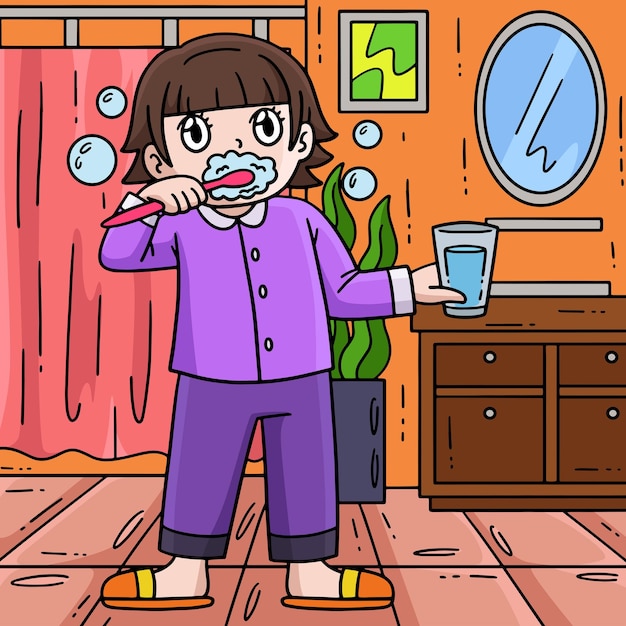
Dental care for colored teeth requires a specific approach that goes beyond the basics. This comprehensive guide to dental care for colored teeth will explore how to keep your colored teeth bright, addressing common concerns, and offering practical solutions. We’ll delve into the causes of tooth discoloration, effective home care strategies, professional treatments, and nutritional considerations to help you maintain a beautiful, healthy smile. This article will follow a structured approach, starting with the basics, then moving to advanced techniques and finally discussing preventative measures.
Understanding the Causes of Discoloration
Intrinsic vs. Extrinsic Stains
Colored teeth can suffer from intrinsic or extrinsic stains. Intrinsic stains are caused by factors impacting the tooth’s structure itself, such as genetics, age, or dental trauma. These stains are often more difficult to remove compared to extrinsic stains, which are surface-level stains from foods, drinks, or smoking. Understanding this distinction helps determine the most appropriate dental care strategy.
Common Dietary Culprits
Many everyday foods and beverages can contribute to staining. Coffee, tea, red wine, berries, and dark-colored sauces are notorious culprits. Identifying your individual dietary contributors is key to preventing further staining and maintaining a brighter smile.
Habits that Harm
Smoking, for example, is a significant factor in discoloring teeth. Exposure to tobacco smoke deposits stains on teeth over time. Consistent teeth brushing and mouth rinses can significantly mitigate or prevent these issues.
Effective Home Care Strategies
The Importance of Brushing Techniques
Brushing twice daily with fluoride toothpaste is essential. However, using the right brushing technique is crucial. Use soft-bristled brushes and a gentle circular motion. Focusing on plaque removal and aiming for all surfaces of the teeth is vital. Brushing along the gum line gently can help maintain gum health.
Implementing a Consistent Oral Hygiene Routine
A regular oral hygiene routine includes flossing daily to remove food particles and plaque buildup between teeth. Using mouthwash can help neutralize acids and kill bacteria. A consistent cleaning routine can make a considerable difference in the long run.
Natural Remedies and DIY Approaches
Some natural remedies are suggested for teeth whitening, including using baking soda paste and apple cider vinegar rinses. However, these should be used cautiously and under the guidance of a dentist, as excessive use could potentially harm tooth enamel. Experimenting with DIY remedies should be done sparingly and monitored closely to evaluate any potential impact.
Professional Teeth Whitening Procedures
In-Office Whitening Treatments
Professional teeth whitening procedures offer faster and more significant results. In-office treatments using bleaching agents under a dentist’s supervision are highly effective, and the dentist can closely monitor and manage any potential sensitivities.
At-Home Whitening Kits
At-home whitening kits are convenient options. These kits often involve custom-fit trays filled with bleaching gel, which can achieve a noticeable improvement. However, follow your dentist’s instructions precisely to avoid any potential damage.
Considerations and Concerns
Teeth whitening treatments can sometimes cause temporary sensitivity or discomfort. Discuss potential side effects with your dentist to ensure a safe and effective procedure.
Diet and Lifestyle Changes
The Impact of Diet
A balanced diet plays a critical role in maintaining oral health. Limit your consumption of sugary foods and drinks to avoid tooth decay. Increasing the intake of fruits and vegetables, rich in vitamins, also contributes to strong teeth and overall health. A careful dietary approach can profoundly impact your teeth.
Reducing Staining Agents
Identifying and minimizing your consumption of stain-causing foods and beverages is crucial. Consider using straws when drinking colored drinks to prevent the direct contact of the staining agents with your teeth.
Maintaining a Hydrated Lifestyle
Drinking plenty of water is paramount for overall health, including oral health. Water helps rinse away food particles and prevent buildup, promoting better oral hygiene. A healthy hydration level contributes to a healthier smile.
Preventing Future Staining
Regular Dental Check-Ups
Regular dental check-ups and cleanings are critical for maintaining a radiant smile and a healthy mouth. Professional cleanings remove plaque buildup, which can lead to discoloration over time. Regular appointments help detect issues early.
Choosing Suitable Foods and Beverages
Opting for less-staining foods and beverages is a significant preventative measure. Consider drinking water more frequently or using a straw when consuming highly staining drinks. Making conscious choices about what you consume can lead to significant impacts on the health and appearance of your smile.
Protective Measures
Wearing mouthguards during sports or activities that may cause impact can protect your teeth from injury. This preventive measure also protects against further damage in the long run.
How often should I visit the dentist for teeth cleaning?
You should aim for regular dental check-ups and cleanings every six months to maintain oral health. During these visits, a professional cleaning helps remove any accumulated plaque that can lead to staining and other dental issues. This is a critical part of long-term care for colored teeth.
Can specific foods and beverages cause tooth discoloration?
Yes, many foods and drinks can lead to tooth discoloration. For example, coffee, tea, red wine, berries, and dark-colored sodas can stain teeth due to their pigment content. Choosing suitable foods and beverages is one of the most effective methods for preventing stains.
In summary, achieving bright, healthy colored teeth hinges on a comprehensive approach that combines proper brushing techniques, dietary choices, and regular professional cleanings. By understanding the nuances of dental care specific to colored teeth, you can maintain a beautiful smile and enjoy a lifetime of oral well-being. Consult your dentist for personalized advice and treatment plans. Maintaining a consistent dental care routine and exploring advanced teeth whitening procedures can enhance your confidence and make your smile truly radiant.